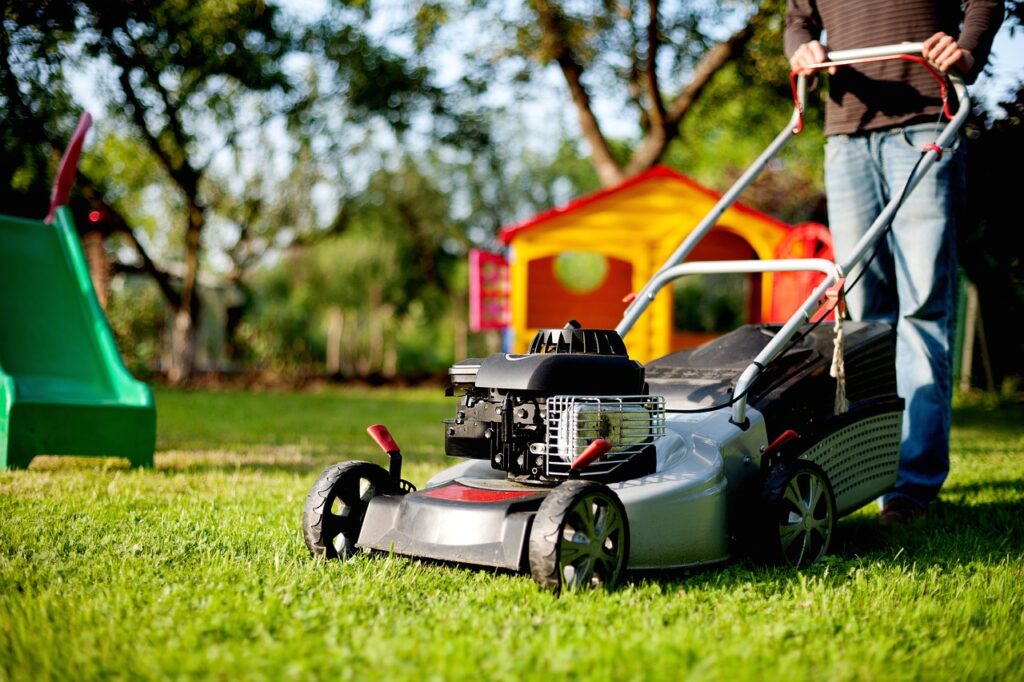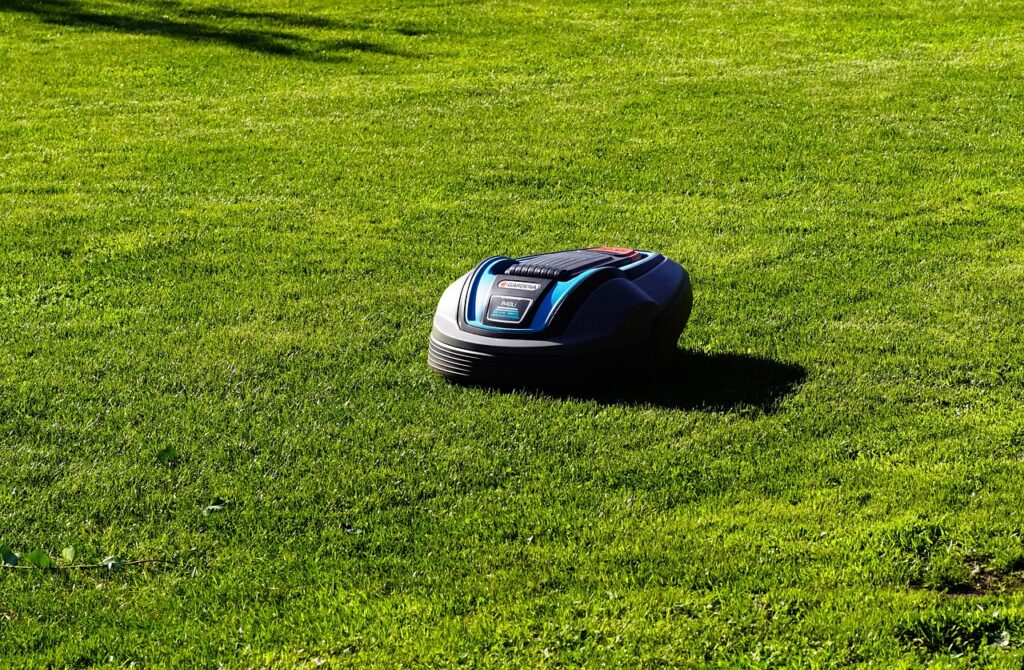Lawn mowers have undergone significant evolution since their inception. What began as a basic hand-pushed device for trimming grass has progressed through multiple stages of technological innovation. Today, robotic lawn mowers are redefining the industry, integrating AI, automation, and advanced sensors to transform the way we maintain our lawns. In this blog, we’ll take a look at the key milestones in lawn mower development and explore how the future of lawn care is being shaped by smart, autonomous solutions.
The Early Days: Manual Tools
The history of lawn mowers began with manual tools, which were the only option available to homeowners. The first mechanical lawn mowers, invented in the 19th century, were human-powered push models. These simple devices operated by spinning a set of blades as the user pushed the mower across the grass. While effective, these tools required considerable physical effort and were limited in terms of efficiency and cutting precision.
Stage 2: Gas-Powered and Electric Lawn Mowers
The 20th century saw a major advancement in lawn care with the introduction of motorized lawn mowers. These mowers, powered by either gasoline engines or electricity, significantly reduced the physical effort needed to maintain a lawn. Gas-powered mowers became particularly popular due to their strength and portability, though they came with some drawbacks, such as noise, air pollution, and the need for regular upkeep.
On the other hand, electric lawn mowers—both corded and cordless—provided a cleaner, quieter option. However, their range and battery life were often limited compared to their gas-powered counterparts. While these innovations improved the efficiency of lawn care, they still required manual operation and did not offer the level of convenience or automation that would emerge in later years.
Stage 3: Lithium-Ion Battery-Powered Mowers
The third phase of lawn mower evolution introduced lithium-ion battery-powered models, marking a significant leap in both performance and environmental impact. These mowers eliminated the need for gasoline, reducing harmful emissions and offering a cleaner, more sustainable option. The advancements in battery technology also led to longer run times and quicker recharge times, making them more convenient for homeowners.
Although these battery-powered mowers still required human operation and guidance, they set the stage for the next major innovation—autonomous robotic lawn mowers.
Stage 4: The Rise of Smart, Autonomous, and IoT-Integrated Lawn Mowers
The future of lawn care is centered on intelligent, autonomous machines that operate independently, powered by cutting-edge technologies such as the Internet of Things (IoT) for a fully connected experience. The fourth stage in the evolution of lawn mowers represents a shift toward fully automated and smart systems, incorporating multiple technological advancements over time.
Phase 1: Boundary-Wire Lawn Mowers
The first phase of autonomous mowers used boundary wires to define the mowing area. While this technology offered more automation than traditional push mowers, it still required manual setup and maintenance, meaning a degree of human involvement remained.
Phase 2: RTK-Enabled Ultrasonic Mowers
In the next phase, RTK GPS technology and ultrasonic sensors were integrated, offering centimeter-level accuracy. This enabled the mowers to navigate more precisely and detect obstacles more effectively, improving their performance in a variety of environments.
Phase 3: RTK + 2D Vision Mowers
Building upon RTK and ultrasonic sensors, the introduction of 2D vision systems enhanced mapping, obstacle detection, and path planning capabilities. This upgrade allowed mowers to navigate with even greater precision and adaptability, particularly in complex and dynamic environments.
Phase 4: RTK + 2D + 3D Vision Mowers
The latest innovation combines RTK GPS with both 2D and 3D vision technologies, enabling mowers to respond to their surroundings with exceptional precision. This integration allows for fully autonomous operation, ensuring peak performance across a wide range of terrains and conditions.
Ideal Uses for Robotic Lawn Mowers: Top Application Scenarios
As robotic lawn mowers continue to evolve, their applications are expanding to meet a wide range of needs across different environments. These innovative machines are particularly valuable in regions with large lawns, suburban areas, and landscapes that require precision and consistency. Here are some of the key benefits and application scenarios where robotic lawn mowers excel:
Residential Homes: Robotic lawn mowers are becoming increasingly popular in residential areas, especially for homeowners with expansive lawns. Their autonomous operation saves time and effort, ensuring a consistent, high-quality cut every time without the need for manual intervention.
Commercial Properties: Large commercial properties, such as office parks, golf courses, and public spaces, benefit greatly from robotic mowers. These machines can operate autonomously for extended periods, reducing labor costs and maintaining well-manicured grounds with minimal human oversight.
Golf Courses and Sports Fields: Precision is crucial when maintaining the turf on golf courses and sports fields. Robotic mowers equipped with RTK GPS and vision systems can ensure the grass is cut to exact specifications, enhancing both the aesthetic and functional quality of the turf.
Related Post: The Benefits of Robot Mowers for Golf Course Maintenance
Municipal and Public Gardens: Urban parks, gardens, and green spaces require frequent mowing to stay looking their best. Robotic mowers provide an efficient, eco-friendly solution to manage these areas, offering quieter, cleaner alternatives to noisy gas-powered mowers.
Regions with Complex Terrain: In areas with uneven terrain or numerous obstacles such as trees, bushes, or rocks, robotic mowers equipped with advanced sensors and vision technology are invaluable. Their ability to navigate and adapt to challenging environments ensures that they can handle lawns that would be difficult for traditional mowers to manage.
The Future: A Fully Automated Lawn Care System
Looking ahead, the future of lawn care is clearly heading toward greater automation and intelligence. With continuous advancements in AI, machine learning, and sensor technologies, robotic lawn mowers are poised to become even more efficient, reliable, and autonomous. The integration of the Internet of Things (IoT) will enable these mowers to seamlessly connect with other smart devices in the home, creating a fully automated lawn care ecosystem.
In the near future, we may see features such as predictive maintenance, automated lawn health monitoring, and the ability to remotely control and monitor mowers via mobile apps. As these technologies evolve, robotic lawn mowers will offer even more convenience and precision, making them an indispensable tool for both homeowners and businesses.
The Future of Lawn Mowing: Smart, Autonomous, and Sustainable
Lawn mowers have come a long way, evolving from simple manual tools to sophisticated, intelligent robots. As technology progresses, the future of lawn care is clearly steering toward smarter, more autonomous solutions that deliver exceptional results with minimal effort. With the integration of AI, RTK GPS, 2D/3D vision, and IoT, these mowers are set to revolutionize lawn care, making it more efficient, sustainable, and accessible for homeowners and businesses alike.
The future of lawn care is autonomous—and it’s already here.


